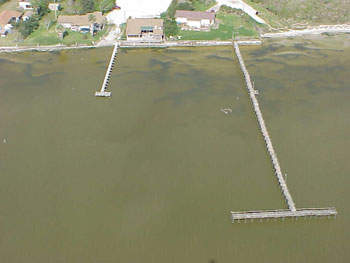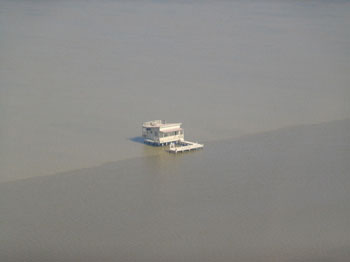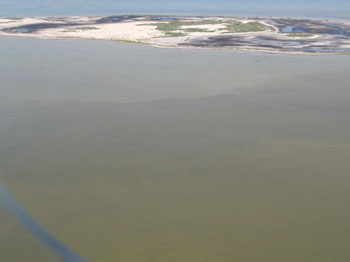Brown Tide in Texas
Overflight Summary
In early 2005, Tracy Villareal of the University of Texas Marine Science Institute (UTMSI) tested a water sample from Baffin Bay for the presence of the brown tide organism Aureoumbra lagunensis. The sample was provided by an angler who had noticed the discolored water. Since brown tide was suspected as a possible cause for the discoloration, TPWD biologists were asked to collect additional water samples from the lower Laguna Madre for testing. Brown tide was confirmed in early March after tests performed by Ed Buskey of UTMSI showed the presence of A. lagunensis in the water samples.
On March 17, TPWD biologists Mike Weeks, Randy Blankinship and Meridith Byrd participated in an overflight of the entire Laguna Madre (from Corpus Christi to Port Isabel) to understand the distribution of the brown tide. From the air it was easy to identify areas of brown tide due to the noticeable change in water color. Brown tide blooms appeared to be the densest in the Lower Laguna Madre with heavy to patchy blooms occurring from the Land Cut (at the north) to Laguna Vista and almost to the Queen Isabella Memorial Causeway (at the south.) Brown tide was present in dense blooms in the upper reaches of Baffin Bay including both the Laguna Salada and Cayo del Grullo. A patchy bloom appeared to be present in 9-Mile Hole.

Port Mansfield. Photo: Meridith Byrd, TPWD

Laguna Madre near South Padre Island. Photo: Mike Weeks, TPWD

Laguna Madre near the Arroyo Colorado. Photo: Mike Weeks, TPWD